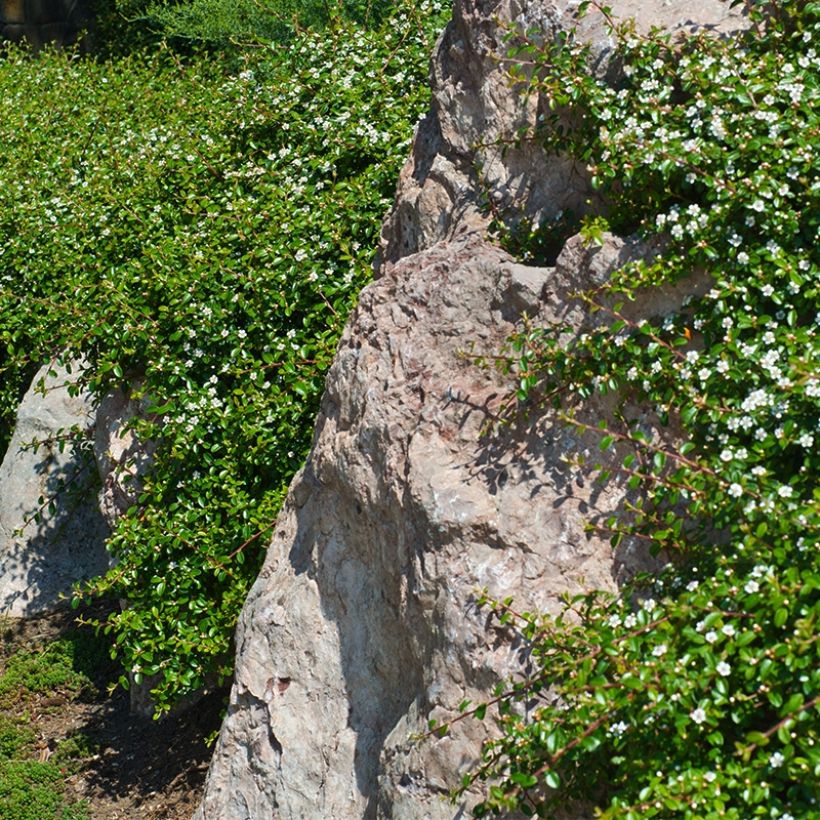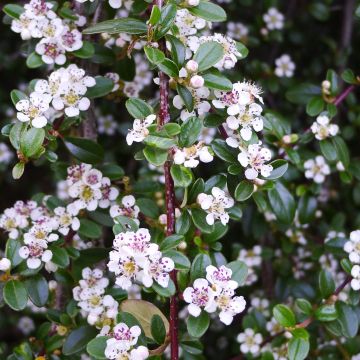

Cotoneaster dammeri Miranda - Cotoneaster de Dammer


Cotoneaster dammeri Miranda - Cotoneaster de Dammer


Cotoneaster dammeri Miranda - Cotoneaster de Dammer


Cotoneaster dammeri Miranda - Cotoneaster de Dammer
Cotoneaster dammeri Miranda
Cotoneaster dammeri Miranda
Bearberry Cotoneaster, Dammer's Cotoneaster
Very satisfied with your delivery. The garden isn't very large, so they go to Normandy, to Laurence. Thanks to the people who pack the parcels.
genevieve, 22/11/2024
Special offer!
Receive a €20 voucher for any order over €90 (excluding delivery costs, credit notes, and plastic-free options)!
1- Add your favorite plants to your cart.
2- Once you have reached €90, confirm your order (you can even choose the delivery date!).
3- As soon as your order is shipped, you will receive an email containing your voucher code, valid for 3 months (90 days).
Your voucher is unique and can only be used once, for any order with a minimum value of €20, excluding delivery costs.
Can be combined with other current offers, non-divisible and non-refundable.
Home or relay delivery (depending on size and destination)
Schedule delivery date,
and select date in basket
This plant carries a 24 months recovery warranty
More information
We guarantee the quality of our plants for a full growing cycle, and will replace at our expense any plant that fails to recover under normal climatic and planting conditions.

Would this plant suit my garden?
Set up your Plantfit profile →
Description
Cotoneaster dammeri 'Miranda' is a variety of Cotoneaster which is more vigorous than the species, with wider foliage and longer, trailing branches. This spreading shrub is an excellent ground cover, evergreen and robust. Ideal for covering large areas with its dense foliage that limits the growth of weeds on slopes, wall edges, or at the base of larger shrubs in borders or rockeries. In June, it is covered in small white flowers with pink markings that develop into round, red berries. This shrub is easy to grow and thrives even in shade and in poor soils, dry during summer.
Cotoneaster dammeri belongs to the large family of Rosaceae and is native to central and western China. This very vigorous shrub can withstand pronounced droughts as well as harsh winters, even when growing in poor, rocky soil. The cultivar 'Miranda' has a spreading and trailing habit, supported by long, curved and flexible, dense, reddish-brown branches. Its growth is very rapid, reaching a height of approximately 30 cm (11.8 in) with a spread of 2 m (6 ft 7 in) or more as its branches naturally layer themselves. Its evergreen foliage is composed of thick and leathery, oval leaves, larger and wider than those of the species, very dark green and glossy. Very small flowers with 5 white petals marked with pink appear in June. This flowering, which is attractive to bees, gives way to fleshy, bright red fruits measuring 5 to 7 mm (0.2 to 0.3 in) in diameter and appreciated by birds.
Cotoneaster dammeri 'Miranda' is ideal for covering large, challenging areas of the garden, bringing a very neat touch. While it can grow in almost any conditions, it will be more fruitful in the sun and will develop faster in fertile, moist soil. Perfect at the base of a tall hedge or in a shaded and bare corner of the garden, for example under a large tree, it can also be planted in a rockery to fill the spaces between other plants. Plant it on a large slope, above a wall or retaining wall, along a terrace or pathway. It can be combined, for example, with Blue Star creeping juniper, Euonymus fortunei Emerald Gaiety, and Forsythia intermedia Marée d'or to add some colour.
Report an error about the product description
Cotoneaster dammeri Miranda in pictures






Plant habit
Flowering
Foliage
Botanical data
Cotoneaster
dammeri
Miranda
Rosaceae
Bearberry Cotoneaster, Dammer's Cotoneaster
Cultivar or hybrid
Other Cotoneaster
View all →Planting and care
Plant Cotoneaster dammeri 'Miranda' in a sunny position for it to flower and fruit more. Partial shade, or even shade, is not a problem in hot and dry regions. It requires well-draining soil as it dislikes excess moisture. Its drought tolerance is excellent once it is well established. It will adapt to slightly acidic, neutral, or even limestone soils, as well as rocky soils.
Planting period
Intended location
Care
-
, onOrder confirmed
Reply from on Promesse de fleurs
Similar products
Haven't found what you were looking for?
Hardiness is the lowest winter temperature a plant can endure without suffering serious damage or even dying. However, hardiness is affected by location (a sheltered area, such as a patio), protection (winter cover) and soil type (hardiness is improved by well-drained soil).

Photo Sharing Terms & Conditions
In order to encourage gardeners to interact and share their experiences, Promesse de fleurs offers various media enabling content to be uploaded onto its Site - in particular via the ‘Photo sharing’ module.
The User agrees to refrain from:
- Posting any content that is illegal, prejudicial, insulting, racist, inciteful to hatred, revisionist, contrary to public decency, that infringes on privacy or on the privacy rights of third parties, in particular the publicity rights of persons and goods, intellectual property rights, or the right to privacy.
- Submitting content on behalf of a third party;
- Impersonate the identity of a third party and/or publish any personal information about a third party;
In general, the User undertakes to refrain from any unethical behaviour.
All Content (in particular text, comments, files, images, photos, videos, creative works, etc.), which may be subject to property or intellectual property rights, image or other private rights, shall remain the property of the User, subject to the limited rights granted by the terms of the licence granted by Promesse de fleurs as stated below. Users are at liberty to publish or not to publish such Content on the Site, notably via the ‘Photo Sharing’ facility, and accept that this Content shall be made public and freely accessible, notably on the Internet.
Users further acknowledge, undertake to have ,and guarantee that they hold all necessary rights and permissions to publish such material on the Site, in particular with regard to the legislation in force pertaining to any privacy, property, intellectual property, image, or contractual rights, or rights of any other nature. By publishing such Content on the Site, Users acknowledge accepting full liability as publishers of the Content within the meaning of the law, and grant Promesse de fleurs, free of charge, an inclusive, worldwide licence for the said Content for the entire duration of its publication, including all reproduction, representation, up/downloading, displaying, performing, transmission, and storage rights.
Users also grant permission for their name to be linked to the Content and accept that this link may not always be made available.
By engaging in posting material, Users consent to their Content becoming automatically accessible on the Internet, in particular on other sites and/or blogs and/or web pages of the Promesse de fleurs site, including in particular social pages and the Promesse de fleurs catalogue.
Users may secure the removal of entrusted content free of charge by issuing a simple request via our contact form.
The flowering period indicated on our website applies to countries and regions located in USDA zone 8 (France, the United Kingdom, Ireland, the Netherlands, etc.)
It will vary according to where you live:
- In zones 9 to 10 (Italy, Spain, Greece, etc.), flowering will occur about 2 to 4 weeks earlier.
- In zones 6 to 7 (Germany, Poland, Slovenia, and lower mountainous regions), flowering will be delayed by 2 to 3 weeks.
- In zone 5 (Central Europe, Scandinavia), blooming will be delayed by 3 to 5 weeks.
In temperate climates, pruning of spring-flowering shrubs (forsythia, spireas, etc.) should be done just after flowering.
Pruning of summer-flowering shrubs (Indian Lilac, Perovskia, etc.) can be done in winter or spring.
In cold regions as well as with frost-sensitive plants, avoid pruning too early when severe frosts may still occur.
The planting period indicated on our website applies to countries and regions located in USDA zone 8 (France, United Kingdom, Ireland, Netherlands).
It will vary according to where you live:
- In Mediterranean zones (Marseille, Madrid, Milan, etc.), autumn and winter are the best planting periods.
- In continental zones (Strasbourg, Munich, Vienna, etc.), delay planting by 2 to 3 weeks in spring and bring it forward by 2 to 4 weeks in autumn.
- In mountainous regions (the Alps, Pyrenees, Carpathians, etc.), it is best to plant in late spring (May-June) or late summer (August-September).
The harvesting period indicated on our website applies to countries and regions in USDA zone 8 (France, England, Ireland, the Netherlands).
In colder areas (Scandinavia, Poland, Austria...) fruit and vegetable harvests are likely to be delayed by 3-4 weeks.
In warmer areas (Italy, Spain, Greece, etc.), harvesting will probably take place earlier, depending on weather conditions.
The sowing periods indicated on our website apply to countries and regions within USDA Zone 8 (France, UK, Ireland, Netherlands).
In colder areas (Scandinavia, Poland, Austria...), delay any outdoor sowing by 3-4 weeks, or sow under glass.
In warmer climes (Italy, Spain, Greece, etc.), bring outdoor sowing forward by a few weeks.


















































